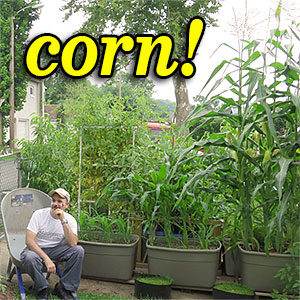Tips & Tricks:
My garden related research has led me to a variety of tips and tricks that are touted as miracle cures. Are they just placebos derived from old wives' tales? Well, some are quite real and worth knowing about. Of course, some may ineffective or even detrimental to plants if misapplied. So exercise caution & always do your homework before using these...
ASPIRIN - Aspirin contains salicylic acid which naturally occurs in willow trees. Researchers have found that this chemical can trigger certain defensive mechanisms within plants. This then leads to improved growth & disease resistance.
To try this out you can create a solution using 1 1/2 tablets (between 250mg to 500mg) of uncoated aspirin per 1 gallon of water. Do NOT make it stronger than this or you may burn the plant foliage. Spray on the leaves every 2 or 3 weeks in the morning or late day. You can even use a little on seedlings after they have grown their first set of "true" leaves.
Source: https://news.cornell.edu/stories/2003/12/plant-gene-offers-disease-control-without-pesticides
EPSOM SALTS - Many gardeners claim that peppers, tomatoes & roses benefit from a small amount of Epsom salts added to water. Composed of sulfur & magnesium, Epsom salts can be used to boost blooms & fruit yield. Plants may grow greener too as chlorophyll production is improved.
Personally, I've made a foliar spray for my peppers' leaves by mixing 1 Tbs Epsom salts with 1 gallon water. I noticed no ill effects. (The roots could be watered with the solution as well). I think the ideal time for a foliar spray is right when the buds are about to set & then again 1 week later. Make sure your soil isn't already high in sulfur / magnesium. Also, I wouldn't spray with a sulfur based spray at the same time as using Epsom salts. Note: Do NOT apply to Sage!
Source: garden.org/learn/articles/view/68/
HYDROGEN PEROXIDE - Hydrogen Peroxide (H2O2) is an oxygenating compound that breaks down into water & oxygen. It can be used as a disinfectant or antiseptic. To reduce safety risks, I recommend using a 3% solution, available from your grocer or pharmacy. When applied to plants, hydrogen peroxide can help to kill molds & mildews. It can also help to prevent infections at damaged or cut sites.
I experienced no problems when spraying my plants with a solution of 1/4 cup H2O2 (3%) + 1/2 gallon water. I used it on my strawberries to prevent mildews when the weather was cool & damp.
Source: www.ams.usda.gov/sites/default/files/media/Hydrogen%20Peroxide%203%20TR%202015.pdf
CINNAMON - Cinnamon has anti-fungal properties. This is good news for your seedlings. In the first few weeks of growing, seedlings are susceptible to "damping off". Damping off occurs when a delicate seedling is literally strangled by fungal growth. The stem will look very thin at the soil line & eventually the seedling may fall over dead. Over-watering is the biggest cause. Lack of air flow is bad too.
But if you're looking for a little edge over the fungi, some sources suggest sprinkling a light coating of cinnamon on the soil surface at the time of planting your seeds. I've done this with dozens of seed types & never had any problems. I've read scientific studies demonstrating cinnamon's anti-fungal properties. However, these tests usually involved cinnamon oils or extracts. That being said, I'm not sure how effective a topical dusting truly is.
Source: lib.dr.iastate.edu/cgi/viewcontent.cgi?article=15548&context=rtd
NEEM OIL - Neem oil is obtained by pressing the seeds of a neem tree. It is a naturally occurring substance that breaks down a couple days after application. The oil acts as a long-term pesticide or insecticide. It is slow to act, but it works by disrupting the growth cycles of bothersome insects.
I've used it by mixing it with warm water & a mild, Dawn dish soap. Plant foliage can be treated or the soil can be saturated with the neem solution. It is a good preventative treatment that does not involve dangerous chemicals. And it will not hurt beneficial insects, like lady bugs.
Source: clemson.edu/extension/hgic/pests/pesticide/hgic2770.html
DIATOMACEOUS EARTH - Diatomaceous earth comes from the fossilized remains of diatoms (microscopic, water based organisms with silica skeletons). These tiny, broken skeletons act like little shards of glass. When an insect comes in contact with it, their bodies get scratched or even punctured. Dehydration & death ensues. Bear in mind that both good & bad insects are affected by diatomaceous earth, so be selective about how you use it.
I've used diatomaceous earth as a powder coating for plant foliage. I also have sprinkled it on the soil surface. This is an organic method of pest control. But still, you don't want to breath it in. So use a mask. I use food-grade diatomaceous earth, NOT filter grade.
Source: cals.arizona.edu/urbanipm/pest_press/2006/september.pdf
KAOLIN CLAY POWDER - Kaolin Clay is a common mineral found in many soils. A very fine powder of it can be mixed with water & sprayed onto the fruits & foliage of your plants. The water evaporates leaving behind a powdery residue. This is referred to as a particle film. When properly applied, this residue creates a physical barrier that deters various pests. Once the fruit is ready for harvest, you can simply rinse the powder right off.
Source: Particle Films: A New Technology for Agriculture
https://pubag.nal.usda.gov/download/47358/pdf



![Friends Don't Let Friends Throw Out Leaves [Gardening T-Shirt Design]](images/Friends-Dont-Let-Friends-Throw-Out-Leaves_Gardening-Tshirt-th.jpg)